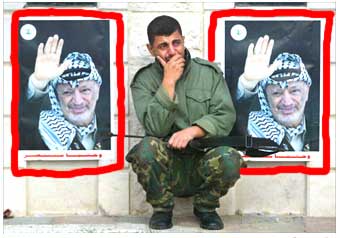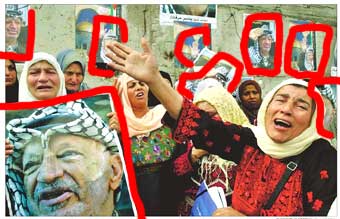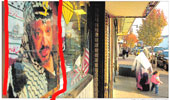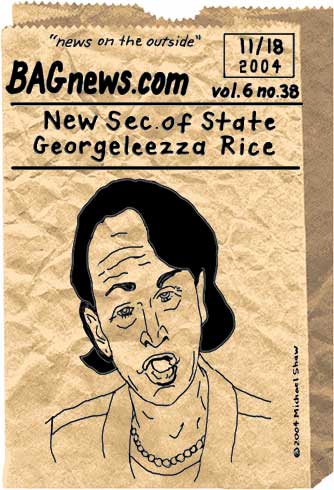Notes
Passing Thoughts On What Makes An Icon
If an icon is someone who has become larger than life, how do you know if someone has really become one or not? One way, I would volunteer, is when a person becomes signified more by pictures of his picture than by his actual picture.
In Yasser Arafat’s death, I think one can observe a growing visual trend in the passing of a prominent leader. In the newspaper coverage the day after he died, I could only find one published portrait of Arafat. (It was this one, below, on the cover of the LA Times.)

Every other front page photo I looked at — and I looked at a couple dozen, at least — presented, in some way, a photo (or, in several cases, multiple photos) of Arafat’s image.




Some might say Arafat was depicted this way because he had been under confinement and was therefore not visually accessible, or because he was considered so disreputable (in the United States) that newspapers avoided running his “actual” picture. In the former case, however, Arafat was not inaccessible to photographers, and goodness knows there have no shortage of file shots of him. In the latter case, I guess there is some merit to the idea that American newspapers felt more comfortable publishing pictures of posters of Arafat, or pictures of Palestinian’s holding posters of Arafat, rather than dignifying him with a “portrait” the way the LA Times did.
These facts, however, don’t override the fact that Arafat was as much a poster, or icon, as he was a person. And, regardless of your feelings for him (just as American liberals –such as myself — can hardly stand the fact that Bush, too, is fast on his way to becoming a poster boy), Arafat is/was an international icon in something of the same way Madonna is, or Kennedy is/was.
Going back to Arafat’s confinement in Ramallah, I also wonder how much of a role Israel and Sharon played in elevating Arafat from personality to symbol. In the assymetrical p.r. war going on in the Middle East, in which confinement conveys martyrdom, and martyrdom conveys a level of status that no amount of patronage or even accomplishment can buy, could it have actually been been the confinement that (symbolically) put Arafat “over the top”? (I was thinking about it because you just don’t find many “pictures in a picture” of Arafat prior to 2001.)
By the way, I was wondering if there are instances in which “icon status” can be conferred. If such a thing is possible, it seems Arafat (here holding up a poster of Marwan Barghuti, who is in an Israeli jail, but rumored as a candidate to take over the Palestinian Authority) has already cast his vote.

(image:newseum.org; YahooNews –AFP/File/Jamal Aruri)


Reactions
Comments Powered by Disqus